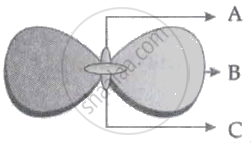Advertisements
Advertisements
प्रश्न
Name the scientist who gave the laws of inheritance.
उत्तर
Gregor Mendel gave the laws of inheritance.
APPEARS IN
संबंधित प्रश्न
How do Mendel’s experiments show that the traits may be dominant or recessive?
A pea plant with blue colour flower denoted by BB is cross-bred with a pea plant with white flower denoted by ww.
(a) What is the expected colour of the flowers in their F1 progeny?
(b) What will be the percentage of plants bearing white flower in F2 generation, when the flowers of F1 plants were selfed?
(c) State the expected ratio of the genotype BB and Bw in the F2 progeny.
Define heredity.
A man with blood group A marries a woman with blood group O and their daughter has blood group O. Is this information enough to tell you which of the traits – blood group A or O – is dominant? Why or why not?
A Mendelian experiment consisted of breeding tall pea plants bearing violet flowers with short pea plants bearing white flowers. The progeny all bore violet flowers, but almost half of them were short. This suggests that the genetic make-up of the tall parent can be depicted as:
How do Mendel's experiments show that traits may be dominant or recessive?
A pregnant woman has an equal chance of her baby being blood group A or blood group AB. Which one of the following shows the possible genotypes of the woman and the father of her child?
(a) IA IA and IB IO
(b) IA IB and IB IO
(c) IA IO and IB IO
(d) IA IB and IA IO
Only one of the following characteristic of the parents can be inherited by their children. This one is :
(a) deep scar on chin
(b) snub nose
(c) technique of swimming
(d) cut nose
In the following figure showing a germinating gram seed, name the parts labelled as A, B and C:

Why is Part 'B' considered to be important during germination?
Figures (a) to (d) given below represent the type of ear lobes present in a family consisting of 2 children - Rahul, Nisha and their parents.
|
(a) Rahul's Father |
(b) Rahul |
(c) Rahul's Mother |
(d) Rahul's sister Nisha |
|
(e) |
(f) |
||
| Types of ear lobes | |||
Excited by his observation of different types of ear lobes present in his family, Rahul conducted a survey of the type of ear lobes found {Figure (e) and (f)} in his classmates. He found two types of ear lobes in his classmates as per the frequency given below:
| Sex | Free | Attached |
| Male | 36 | 14 |
| Female | 31 | 19 |
On the basis of the above data answer the following questions.
- Which of the two characteristics - ‘free ear lobe’ or ‘attached ear lobe’ appears to be dominant in this case? Why?
- Is the inheritance of the free ear lobe linked with the sex of the individual? Give a reason for your answer.
- What type of ear lobe is present in father, mother, Rahul and his sister Nisha? Write the genetic constitution of each of these family members which explains the inheritance of this character in this family.
(Gene for the Free ear lobe is represented by F and the gene for the attached ear lobe is represented by f for writing the genetic constitution).
OR
Suresh’s parents have attached ear lobes. What type of ear lobe can be seen in Suresh and his sister Siya? Explain by giving the genetic composition of all.






